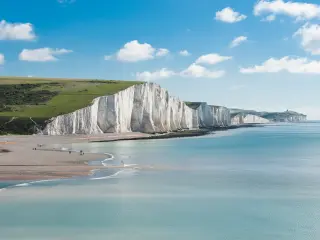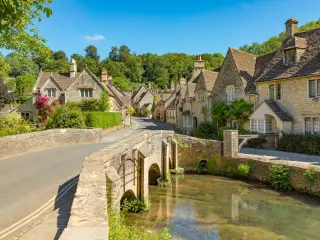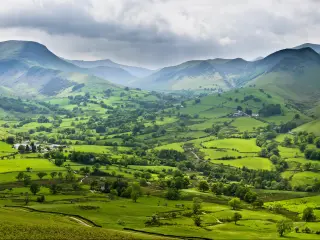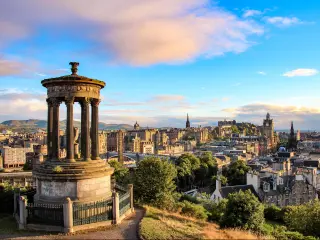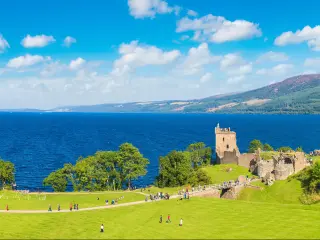Road trip from London to Paris
For a road trip with a difference, the cross-border journey from London to Paris takes you either under or across the English Channel, with scenic landscapes, historic towns and coastal destinations to enjoy along the way.
The 350-mile road trip from London to Paris takes you Shoreham, Sissinghurst and Folkstone then through the Channel Tunnel to Lille and Lens or take the longer crossing from Portsmouth to Normandy and explore Honfleur, Dieppe and the Alabaster Coast.
The landscapes you'll travel through on either side of the Channel at times have a lot in common, while also being unmistakably different. There's also the opportunity to reflect on some of the biggest conflicts of the 20th century as you travel across the Channel and through northern France.
How far is Paris from London, and how long will the road trip take?
| Route | Distance* | Driving Time |
|---|---|---|
| The Tunnel Route | 300 miles | 7 hours 50 minutes Plus time to check in at Eurotunnel terminal |
| The Ferry Route | 350 miles | 2 hours London to Portsmouth; 7 hours Caen to Paris Plus 7 hours 45 minutes on ferry |
*Note: driving distances do not include crossings (either on the ferry or Eurotunnel train).
Paris is only about 220 miles from London as the crow flies, but because you need to factor in getting across the English Channel, your actual driving distance and travel time will be increased.
The quickest way to get from London to Paris by road is to travel via the Channel Tunnel, driving across Kent then following the Autoroutes to Paris. This route involves around 300 miles of driving and will take you just under 8 hours plus time to check in at the Eurotunnel terminal.
Although you could travel this whole route in a day, we'd suggest giving yourself 4 or 5 days to make the trip, so that you can stop to explore as you travel.
Alternatively, you can take the ferry from Portsmouth, Hampshire, to Caen. There is an alternative ferry route from Portsmouth to Le Havre, but this car ferry option does not accept foot passengers or passengers travelling by bicycle.
The 350-mile driving distance on this route is only slightly longer than the Tunnel Route but the combination of slower rural roads plus a long ferry crossing mean that this route will take 16 hours 45 minutes door-to-door, plus a little extra time while you wait to board the ferry.
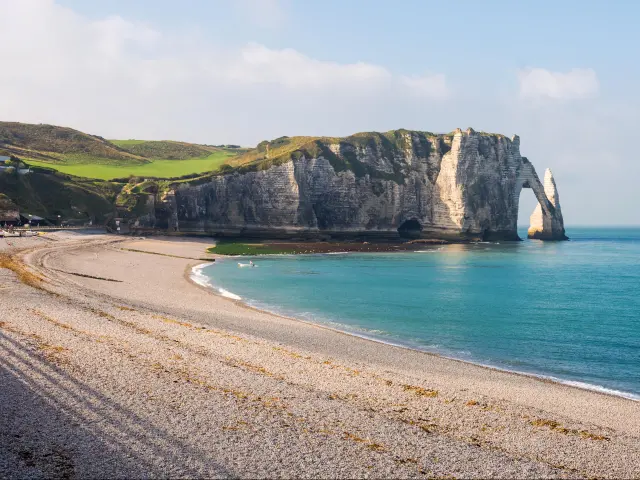
While you definitely can't complete the Ferry Route in a single day, the option to take an overnight ferry means you can easily do the trip in 2 days. However, as with the Tunnel Route we'd suggest taking at least 5 days to visit the many museums, historic houses, beaches and hiking trails along the route.
Whichever route you take, traffic is likely to be heavy heading out of London, so avoid travelling at rush hour and leave extra time if you're heading directly to your Eurotunnel or ferry crossing.
Best road trip route from London to Paris
With such a variation in travel times, your decision about which route to take to Paris will probably be influenced by how long you want your journey to be. Whichever route you take though, rest assured that there will be plenty to see along the way.
The English half of the Tunnel Route takes you to historic houses and palaces, vineyards and through the scenic High Weald, with the option to take a short detour to visit the coastal towns of Dover and Folkestone.
After taking your car through the Channel Tunnel by train, you'll pass through a number of memorials to World War I. You can also visit some fabulous cities, including Lille and Lens, to indulge in amazing food and cultural attractions.
As well as taking longer than the Tunnel Route, tickets for the Ferry Route usually cost a little more than driving onto the Eurotunnel. Most travellers prefer to reserve a cabin for the overnight crossing, which then added to the ticket price.
This route heads southeast out of London, then passes through the rolling Surrey and Hampshire countryside, including part of the South Downs National Park, before arriving in historic Portsmouth for the ferry crossing to Caen.
In France, the route follows the Alabaster Coast (Côte d'Albâtre), famous for its white chalk cliffs and beaches, before swinging inland through Amiens towards Paris.
Both of these routes can be impacted by issues at the channel ports, so check for local information before you travel in case of delays. Parts of the M20 motorway can occasionally be used as a holding area for freight, so journey times to the Channel Tunnel may be slower, and local diversions are possible.
Remember that to take this trip you'll need a valid passport, and also check that your car rental agreement allows you to take a car that is hired in England across the channel to Europe.
The Tunnel Route
The quickest way to get to the Channel Tunnel from London is to follow the A20 then the M20 across Kent, leading you directly to the Channel Tunnel terminal in just over an hour. However, we'd suggest taking a more scenic route through the Kent countryside if you have time.
Head southeast out of London following the A2 past Blackheath and then merging onto the A20 to finally exit the city. Take the exit at Swanley and follow the A20 towards Farningham before turning right to take the road through the villages of the Darent Valley, where you can enjoy beautiful views of lavender fields in the summer.
The road takes you through Otford, where you can stop to feed the ducks at "Britain's best roundabout," then drive past Knole Park in Sevenoaks. Descending River Hill you'll get a stunning view across the Kent countryside in good weather, before joining the A21 to pick up the pace a little.
From Lamberhurst, turn off to follow the road through the Garden of England, which is lined with orchards and hop fields, before driving through Goudhurst, Sissinghurst and Biddenden and joining the M20 towards the coast at Ashford.
You'll access the Channel Tunnel terminal directly from the motorway, where you'll go through passport control then drive your car onto the train which carries vehicles through the tunnel.
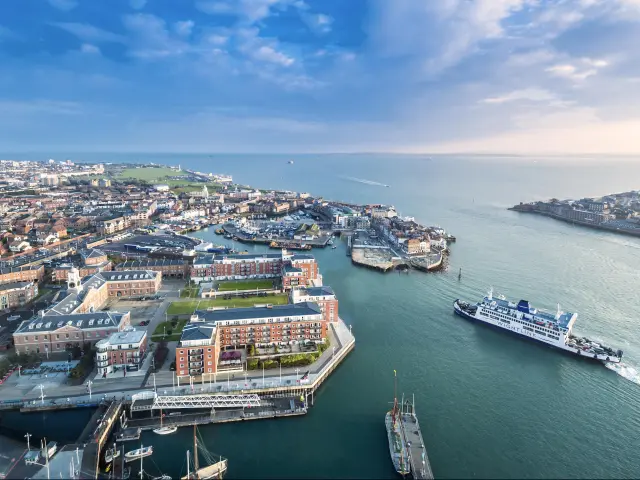
From Calais follow the A16 motorway west then change onto the A25 to Lille, making your way into the centre of the city for a meal or to explore the boutique shops. When you're ready to move on, head out of the city towards the A1 to head south, turning off to visit Lens around 30 minutes further along the road.
From Lens, return to the A1 which continues south and crosses the Somme River near Feuilleres. Then, as you approach Paris you'll cross another of France's great rivers, the Oise. After passing Charles de Gaulle Airport, switch onto the A3 which takes you into the centre of Paris to complete your journey.
The Ferry Route
Pick up the A3 to head southwest out of London, passing through Putney and Richmond before the road exits the city and travels across the Surrey Downs.
As you drive through Guildford, follow the signs to Portsmouth to carry on along the A3. This road takes you through some beautiful countryside including part of South Downs National Park.
On arrival in Portsmouth, join the A27 and follow signs to the ferry terminal, where you'll go through passport control and check in. Then make yourself comfortable on board the ferry crossing.
When you disembark the ferry, follow the road into Caen then pick up the A13. After turning onto the A29 the road takes you to Honfleur and over the impressive Pont de Normandie, which crosses the Seine Estuary.
After St-Jean-de-la-Neuville, leave the Autoroute and follow the D roads through Valmont to reach the coast at St-Pierre-en-Port. Then take the D295 eastwards as far as Dieppe, stopping to call in and explore one or two of the seaside towns along the way.
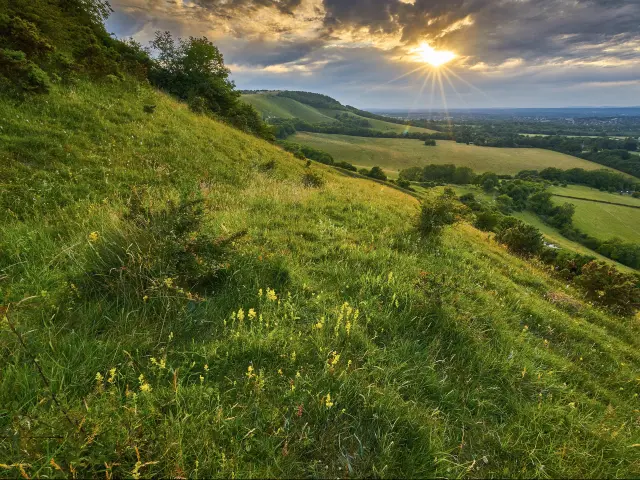
At Le Tréport, on the border between Seine-Maritime and Somme prefectures, the road heads inland towards Abbeville, where you can join the A16 motorway to travel south through Amiens.
Turn off onto the D927 towards Pontoise then you'll make your way through the northern suburbs of Paris on the A15 and A86 before following the road from Nanterre to the city centre.
Best places to stop between London and Paris
There are some fantastic places along this route which make great choices for overnight stops. Here are some of our top picks.
Immerse yourself in arts and history in Lens
If you're taking the Tunnel Route, Lens is the perfect place to spend the final night of your trip. It's about 90 miles from Calais, and around 2 hours and 30 minutes away from Paris.
This former mining town has taken a new direction with the opening of the Louvre's satellite site here. The first stop for many visitors, the modern buildings of the Louvre-Lens display items from the Louvre's collection, with an impressive permanent collection and temporary exhibitions of some of the biggest names in art.
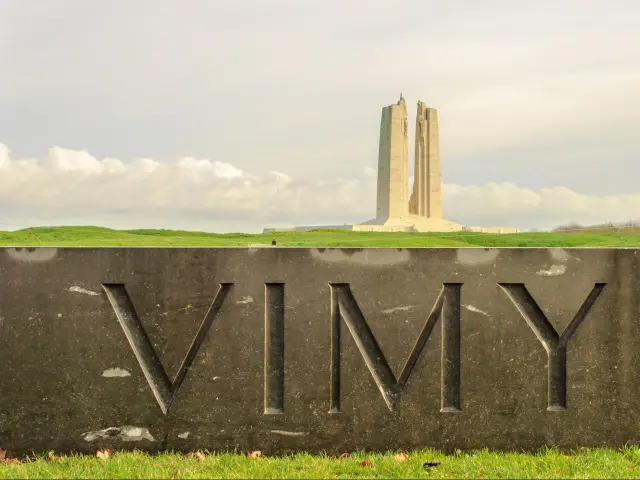
The striking Lens 14-18 museum commemorates the history of WWI, which devastated this part of France (check ahead for seasonal opening times). It's on the same site as Notre-Dame-de-Lorette, a vast military cemetery which includes a memorial to the half a million lives lost in the prefecture during WWI.
A little way out of town, tours are often available at the Canadian National Vimy Memorial, where the huge concrete and limestone towers of Canada's WWI memorial rise up from what was the Vimy Ridge battlefield.
With bold, contemporary design which incorporates some of the building's original features, Hotel Louvre-Lens is a great choice for a night in Lens. It's also one of the closest hotel options to the gallery, as most are in the city's commercial centre which is further away.
There's a small fitness centre but the highlight of the wellness offering is the sauna and hammam, for ultimate relaxation. It also has free guest parking and an onsite restaurant and bar, but there's a range of other food and drink options within walking distance.
Admire the views of the River Seine in Honfleur
If you're taking the Ferry Route, you'll reach Honfleur about an hour after disembarking the ferry. It's another 6 hours of driving from here to Paris.
This beautiful and quaint small city with views onto the River Seine and the Channel is known for its historic buildings and colourful quay and is also a convenient location to spend the night after the long ferry crossing.
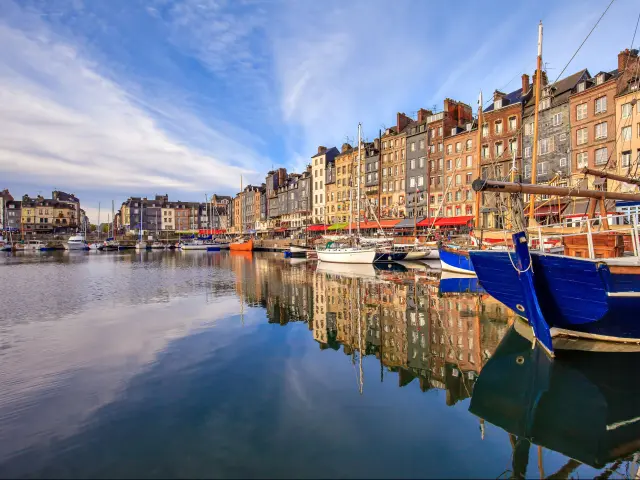
The colourful quays of the Vieux Bassin are lined with several galleries and restaurants, while the nearby Maritime Museum, which is set in an old church right by the port, takes you back to Honfleur's marine heyday and describes the lives of explorers who set sail from this important port.
Located in a 17th-century convent which has been carefully refurbished, La Cour Sainte Catherine demeure de charme has quaint and characterful and comfortable rooms and a magical courtyard garden.
It's in a central location, less than 5 minutes on foot from the Vieux Bassin, so you can leave your car and explore the town after checking in. You can also enjoy a delicious breakfast on-site as you set off on the last leg of your trip.
Where to stay when you reach Paris
Perfectly located as a base to explore the popular district of Montmartre, but with easy access to other parts of the city, Hotel des Arts Montmartre features a quirky but contemporary design and has views across the city from some bedrooms.
Set in a traditional Parisienne building which retains its vintage style, it's reasonably priced for a major city and is a short walk to two metro stations. You will also be located a stone's throw away from the beautiful Sacré-Coeur Basilica.
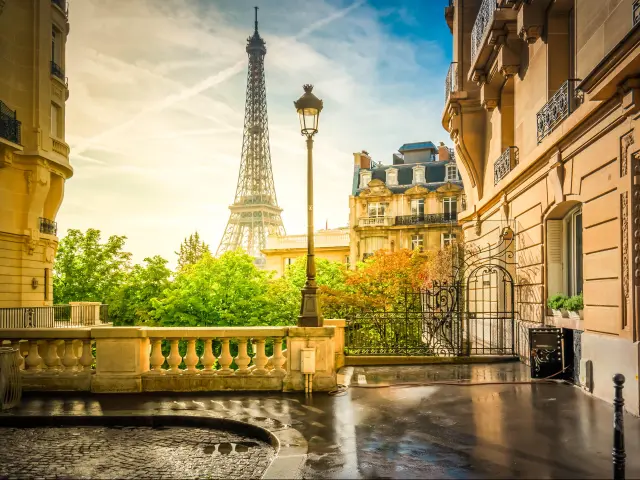
The stylish hotel is also located a short walk from Moulin Rouge, which you will recognise from the many paintings and films it has been depicted in. Place du Tertre is also located close by.
Before you head back home, make sure to take advantage of the hotel's buffer breakfast, which is exactly what is needed as you set off for London.
Things to see on a road trip from London to Paris
The bonus of this road trip is that it takes you through two regions which, although geographically close, offer many different places to explore.
We've picked out some of the highlights to get you started with your planning, but allow extra time to pull in as you pass through many rural villages and seaside towns along the way.

The Tunnel Route
- Blackheath - Stop here for brunch or to walk across the heath (London's Black Death burial ground) to Greenwich, for stunning views across the River Thames and London.
- The Darent Valley - Pull off the motorway for a few miles and follow the picturesque Darent Valley, where you can stop to explore one of the country's most significant Roman villas at Lullingstone, admire views across the Castle Farm lavender fields, taste Kent wines at the Mount Vineyard in Shoreham, and visit the ruins of Otford Palace (previous owners include Thomas Becket and Henry VIII).
- Knole House - This huge stately home, which dates back to the 1400s and is now managed by the National Trust, is said to have inspired the classic novel Orlando. It's set in a beautiful deer park, where the Beatles filmed the videos for Penny Lane and Strawberry Fields Forever.
- Sissinghurst Castle Garden - Also managed by the National Trust, these beautiful gardens were created by writer Vita Sackville-West (whose family home was Knole House) and played host to members of the influential Bloomsbury Set of writers during the first half of the 20th century.
- Folkestone - If you have time before your tunnel crossing, detour to Folkestone to hunt for fossils on the beach, explore the Creative Quarter, walk out along the harbour arm, or hike through the Folkestone Downs.
- Dover - Looking out over the famous White Cliffs, Dover Castle is another short detour off the motorway and takes you through hundreds of years of the town's history including tunnels used in World War 2.
- Ypres/Ieper - Take a short detour off the main route to cross into Belgium and visit historic Ypres. The town was destroyed during some of the most intense battles of World War 1 but has since been carefully reconstructed. There are a number of nearby museums in the Ypres Salient, some of which include sections of the trenches soldiers fought in.
- Lille - The Palais des Beaux-Arts fine art museum contains a fascinating collection inside a beautifully renovated building looking out over the city's main square. Or admire the Flemish-style architecture of the old town with its many cafes and boutiques.
- Lens - Visit the Louvre-Lens, the regional outpost of one of the world's most famous art galleries.
- Abbaye de Royaumont - Guided tours are available at this impressive 800-year-old former Cistercian Abbey, which is a short drive off the Autoroute – check ahead for opening times.
- Park Asterix - This theme park is based around the world of much-loved French comic book featuring the adventures of Asterix and Obelix.
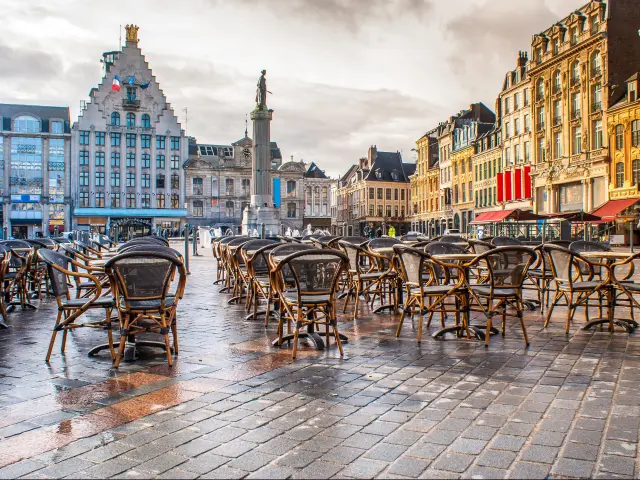
The Ferry Route
- Wisley Gardens - Take a break from the road with a relaxing walk around the impressive ornamental gardens, which often features a butterfly house in the summer months.
- Clandon Park - A country house with a difference, Clandon Park was a stunning Palladian mansion that was nearly destroyed by fire in 2015, which now offers tours of its impressive ruins (currently only open in the summer)
- Hindhead - Follow one of many marked walking trails through this beautiful stretch of woodland and hillside around Hindhead Commons and the Devil's Punchbowl.
- Jane Austen's House - Take a short detour off the route to visit Jane Austen's house in Chawton to see where the author grew up and wrote many of her classic novels.
- South Downs National Park - Explore England's newest national park, which includes sections of rare lowland heath and chalk downland countryside where you can spot rare species. Part of the park is an International Dark Sky Reserve so head here after sunset to see the stars.
- Butser Ancient Farm - This site has been settled since prehistoric times, and today you can visit reconstructed buildings to learn about the people who might have lived here through the centuries.
- Portsmouth - Historically one of Britain's most important ports, you can take your pick of naval history sites to visit, including the Royal Naval Museum, Royal Navy Submarine Museum and Fort Nelson. Portsmouth Historic Dockyard includes the Mary Rose Museum, where Henry VIII's favourite ship has been lovingly preserved, after nearly 450 years underwater in Portsmouth Harbour.
- Caen - There are two abbeys in the historic city of Caen, one built for William the Conqueror who was born here, and one built for his wife. You can also enjoy exploring the city's ancient centre, tour the Musée des Beaux Arts, or visit the Museum of Normandy to find out more about the wider region.
- Saint-Pierre-en-Port - Follow the fabulous hiking trails along the cliffs from this picturesque coastal village.
- Dieppe - Home to ‘France's Finest Market', Dieppe has a long, sweeping sea front and popular pebbled beaches. Walk through Pollet to see traditional fishermen's homes, or visit in November to enjoy the annual Herring and Scallop Festival.
- Le Tréport - Another charming coastal town, surrounded by spectacular cliffs. You can buy fresh produce in the local seafood market, or sit back and let someone else prepare it for you at one of the town's excellent restaurants.
- Amiens - Amiens is famous for its waterways – the Hortillonnages – which you can explore by kayak. Back on dry land you can also visit the majestic cathedral and the Museum of Picardy.

Best time to go on a road trip from London to Paris
Southeast England and Northern France usually have mild winters and moderately warm summers, so the route is drivable all year round however with cool temperatures and frequent rainfall, the trip will feel very different if you travel in the winter.
Average summer temperatures in the south of England are in the low 20 degrees Celsius, but during warm spells can regularly rise to the high 20s. Paris is warmer, with its high 20 degrees average feeling very hot in the city's crowded bars and restaurants.
Parts of Paris can be relatively quiet in summer, especially for the month after the lively Bastille Day celebration (14th July), when many residents leave the city for their summer holiday. However, it's also peak tourist season, so expect queues at major attractions.
The Normandy beaches are at their busiest during the summer period, and accommodation will be in demand.
It very rarely snows in Paris in the winter, when temperatures sit around 8 degrees. Surprisingly, it also rains less in winter than in summer. Christmas markets and festive decorations begin in mid-November, but during the school vacation (mid-Dec to early Jan) it can be extremely busy.
Crowds will be smaller in spring and autumn, but with average temperatures not far below 20 degrees, it's a very pleasant time to visit. You can also catch the Salon du Chocolat – the world's biggest chocolate exhibition - which takes place in venues around the city in October

